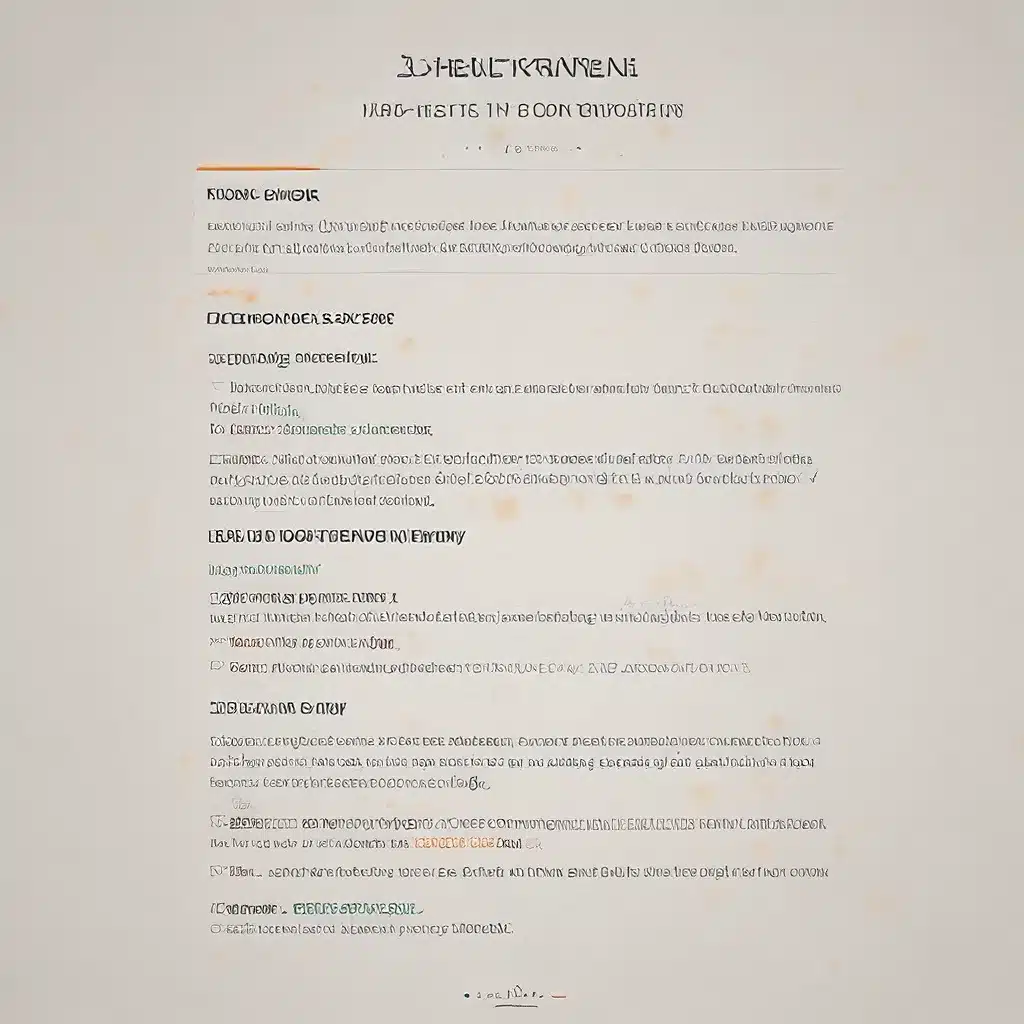
In the dynamic world of web development, the importance of a well-structured and easily navigable website cannot be overstated. As users increasingly expect seamless online experiences, the strategic use of headings and content organization has become a critical factor in achieving both user-centric design and search engine optimization (SEO) success.
The Power of Headings: Enhancing Usability and Accessibility
Headings serve as the backbone of your website’s content structure, providing a clear hierarchy that guides users through the information. By properly implementing heading tags (H1, H2, H3, etc.), you can create a logical flow that enhances the overall user experience.
Heading hierarchy is crucial for both usability and accessibility. Assistive technologies, such as screen readers, rely on the correct use of headings to interpret and navigate the content effectively. Similarly, search engines use headings to better understand the structure and relevance of your web pages, which can positively impact your SEO performance.
When headings are used effectively, they:
- Organize Content: Headings divide your web page into clearly identifiable sections, making it easier for users to comprehend and navigate the information.
- Facilitate Scanning and Skimming: Headings allow users to quickly scan and skim through the content, enabling them to find the information they need more efficiently.
- Provide Visual Cues: Styling headings with different sizes, weights, and colors helps users quickly grasp the hierarchy and importance of the content.
- Enhance Readability: Well-structured headings break up large blocks of text, making the content more digestible and engaging for the reader.
- Improve Accessibility: Proper heading usage ensures that users with visual impairments or cognitive challenges can easily navigate and understand the content.
Crafting Effective Headings for SEO
In addition to enhancing the user experience, headings play a crucial role in search engine optimization (SEO). Search engines use the structure and content of your headings to better understand the focus and relevance of your web pages.
By incorporating relevant keywords into your headings, you can signal to search engines what your content is about, increasing the chances of your pages appearing higher in search results. Well-structured headings can also improve your chances of appearing in featured snippets or rich results, further boosting your visibility and click-through rates.
To optimize your headings for SEO, consider the following best practices:
- Use Relevant Keywords: Incorporate the most important keywords related to your content into your headings, but avoid keyword stuffing.
- Maintain Hierarchy: Ensure that your headings follow a logical hierarchy, starting with the H1 tag for the main title and using subsequent heading levels (H2, H3, etc.) for subheadings.
- Keep Them Concise: Aim for headings that are clear, descriptive, and concise, conveying the essence of the content within each section.
- Avoid Duplication: Ensure that each heading is unique and not repeated across your website, as this can confuse search engines and users.
- Monitor Performance: Analyze your website’s search engine performance and user engagement metrics to identify opportunities for improving your heading structure and content.
Designing Visually Appealing Headings
While the structural and functional aspects of headings are essential, their visual presentation also plays a crucial role in engaging your audience. Effective web design principles can be applied to headings to create a visually appealing and cohesive user experience.
Headings can contribute to the overall aesthetic of your web design by aligning with your brand’s visual identity, using consistent typography, and incorporating subtle design elements that enhance readability and memorability.
When designing your headings, consider the following:
- Hierarchy and Emphasis: Use variations in font size, weight, and color to clearly distinguish the levels of your heading hierarchy and draw attention to the most important content.
- Readability and Accessibility: Ensure that your headings are legible and easily distinguishable from the surrounding text, catering to users with diverse visual and cognitive needs.
- Responsive Design: Optimize your headings for seamless viewing across different devices and screen sizes, maintaining their visual impact and functionality.
- Branding and Consistency: Align your heading styles with your overall web design and brand identity, creating a cohesive and memorable user experience.
Staying Ahead of the Curve: Emerging Trends in Web Heading Strategies
As the web development landscape continues to evolve, new trends and best practices are emerging that can further enhance the effectiveness of your website’s heading structure.
One such trend is the increasing importance of incorporating relevant keywords into your headings to improve search engine visibility. With the growing sophistication of search algorithms, simply using descriptive headings is no longer enough – you need to strategically align your heading content with user search queries to maximize your chances of ranking higher in search results.
Additionally, the rise of voice search and the widespread adoption of digital assistants have brought new considerations to heading design. Web designers and developers must now ensure that their headings are not only visually appealing but also optimized for clear and concise voice-based interactions.
As the digital landscape continues to evolve, staying informed about the latest trends and best practices in heading hierarchy and web content organization will be crucial for maintaining a competitive edge and delivering exceptional user experiences.
Conclusion: The Lasting Impact of Heading Hierarchy
In the dynamic world of web development, a clear and well-structured heading hierarchy is not just a nice-to-have – it’s a necessity. By prioritizing the strategic use of headings, web designers and developers can create websites that are not only visually appealing but also highly usable, accessible, and optimized for search engine success.
As you embark on your next web project, remember the power of headings to organize content, enhance readability, and improve accessibility. By aligning your heading strategy with the latest trends and best practices, you’ll be well on your way to crafting websites that captivate and engage your audience, setting you apart in the ever-evolving digital landscape.




